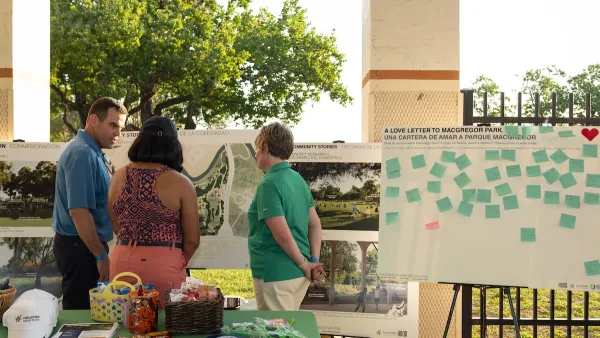America's first public parks were cemeteries. But over time, they've moved from the center of town to the edges. A new book looks at the history of these places of the dead.
The Atlantic talks about the shift in cemetery placement and use with author Keith Eggener, an associate professor of American art and architecture at the University of Missouri.
"The Atlantic: In the book, you note that cemeteries as we know them today first emerged in the 1830s, with the rural cemetery movement. As you mention, Americans had always buried their dead, but did so in churchyards, town commons, or municipal burial grounds. Why the shift to these larger cemeteries?
Keith Eggener: The old church burial grounds were beginning to be seen as inadequate, dangerous, crowded, expensive to maintain, and as carriers of disease. Thousands of burials had taken place on very small plots of ground; these places filled up. You often had burials five or six coffins deep. Sometimes the walls would break down during floods-it was actually rather horrible-coffins would break open and bodies would spill out into the street. During times of epidemics-yellow fever, cholera-cemeteries were seen as centers for the gathering of these diseases and their dissemination. At the same time, cities are becoming more crowded, real estate prices are rising. As the economy was growing, it also came to be the fact that Americans wanted to provide better amenities for their citizens. Cemeteries were seen as the last great necessity. By moving the dead out of the city center to places like Brooklyn and Cambridge, these "rural cemeteries" allowed for much larger burial grounds that also removed the dead from the immediate realm of the living."
FULL STORY: Our First Public Parks: The Forgotten History of Cemeteries

Analysis: Cybertruck Fatality Rate Far Exceeds That of Ford Pinto
The Tesla Cybertruck was recalled seven times last year.

National Parks Layoffs Will Cause Communities to Lose Billions
Thousands of essential park workers were laid off this week, just before the busy spring break season.

Retro-silient?: America’s First “Eco-burb,” The Woodlands Turns 50
A master-planned community north of Houston offers lessons on green infrastructure and resilient design, but falls short of its founder’s lofty affordability and walkability goals.

Test News Post 1
This is a summary

Analysis: Cybertruck Fatality Rate Far Exceeds That of Ford Pinto
The Tesla Cybertruck was recalled seven times last year.

Test News Headline 46
Test for the image on the front page.
Urban Design for Planners 1: Software Tools
This six-course series explores essential urban design concepts using open source software and equips planners with the tools they need to participate fully in the urban design process.
Planning for Universal Design
Learn the tools for implementing Universal Design in planning regulations.
EMC Planning Group, Inc.
Planetizen
Planetizen
Mpact (formerly Rail~Volution)
Great Falls Development Authority, Inc.
HUDs Office of Policy Development and Research
NYU Wagner Graduate School of Public Service



























